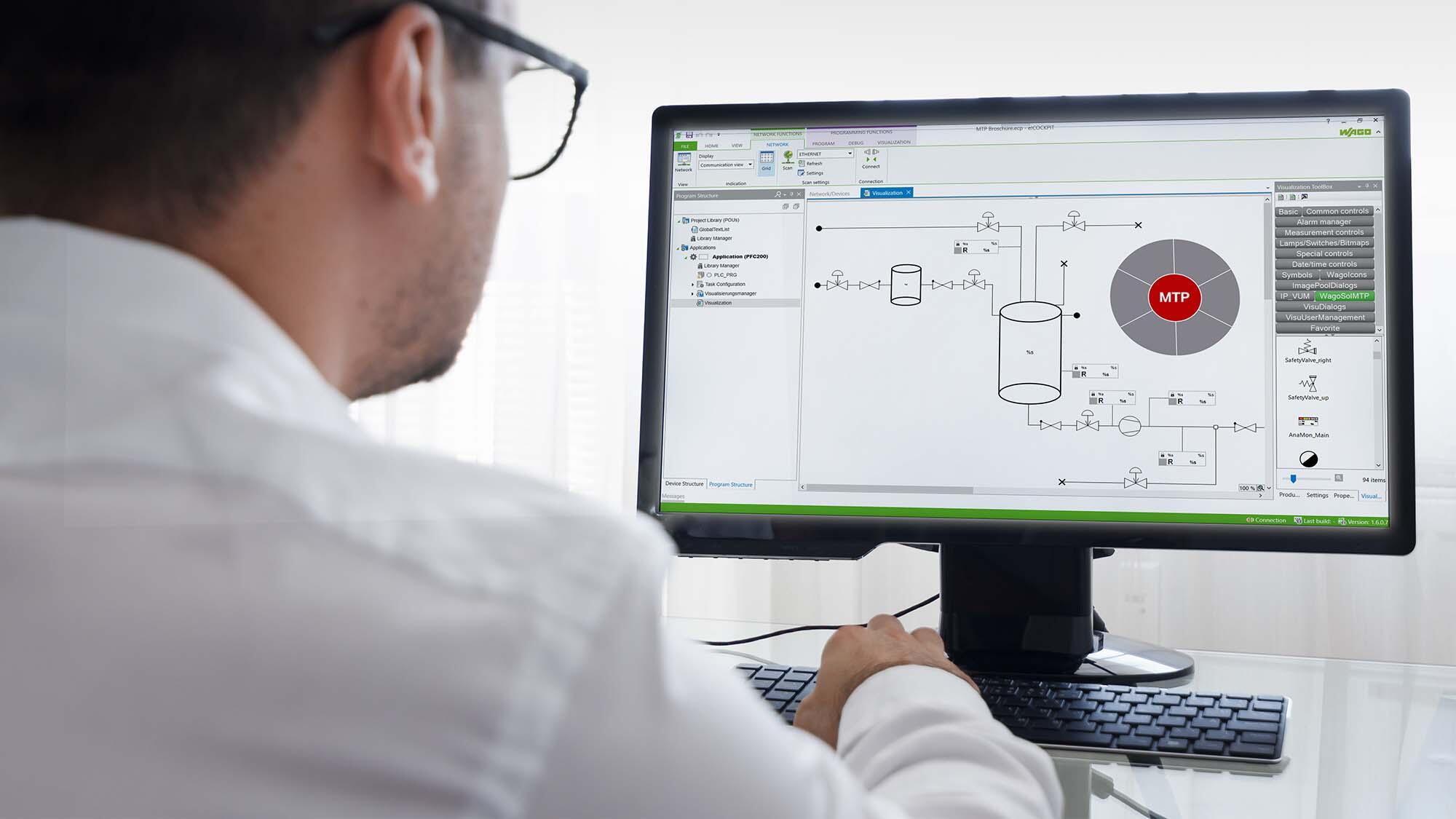


Adaptable processes offer great opportunities – for production too. Fluctuating quantities and highly specialized products require efficient production and easy integration into higher-level systems. Together with NAMUR and ZVEI, WAGO has paved the way for the “Module Type Package.” With its MTP solutions, WAGO can help you take advantage of these opportunities and make your processes, or those of your customers, flexible and adaptable. With MTP, you can also reduce system startup times – and go live earlier than your competition. Interested? Then find out more about our flexible module engineering in our “Module Type Package” video.
The MTP Solution
With the Module Type Package (MTP), properties of process modules are described functionally – regardless of the specific manufacturer and technology. The self-contained modules, which can come from different manufacturers, are easy to reuse and can be interconnected into complex overall systems with little effort. Encapsulation of functionalities within the modules reduces the dependencies among them, ensuring largely interference-free behavior.
Simple integration and exchangeability of system modules
Greater flexibility and speed through reusable, standardized modules
Module Description with Just One Click
What is MTP and What Can It Do?
An MTP includes the following information:
This description file can be read in and processed by higher-level systems, such as visualization or process control systems, called the “Process Orchestration Layer” (POL) below. In terms of its basic purpose and function, MTP is very comparable to a printer driver, which also serves to connect subsystems − in this case, a printer from any manufacturer – to a central computer. Connect it, switch it on, print – or, in the jargon of factory automation and process technology, “plug and produce.”
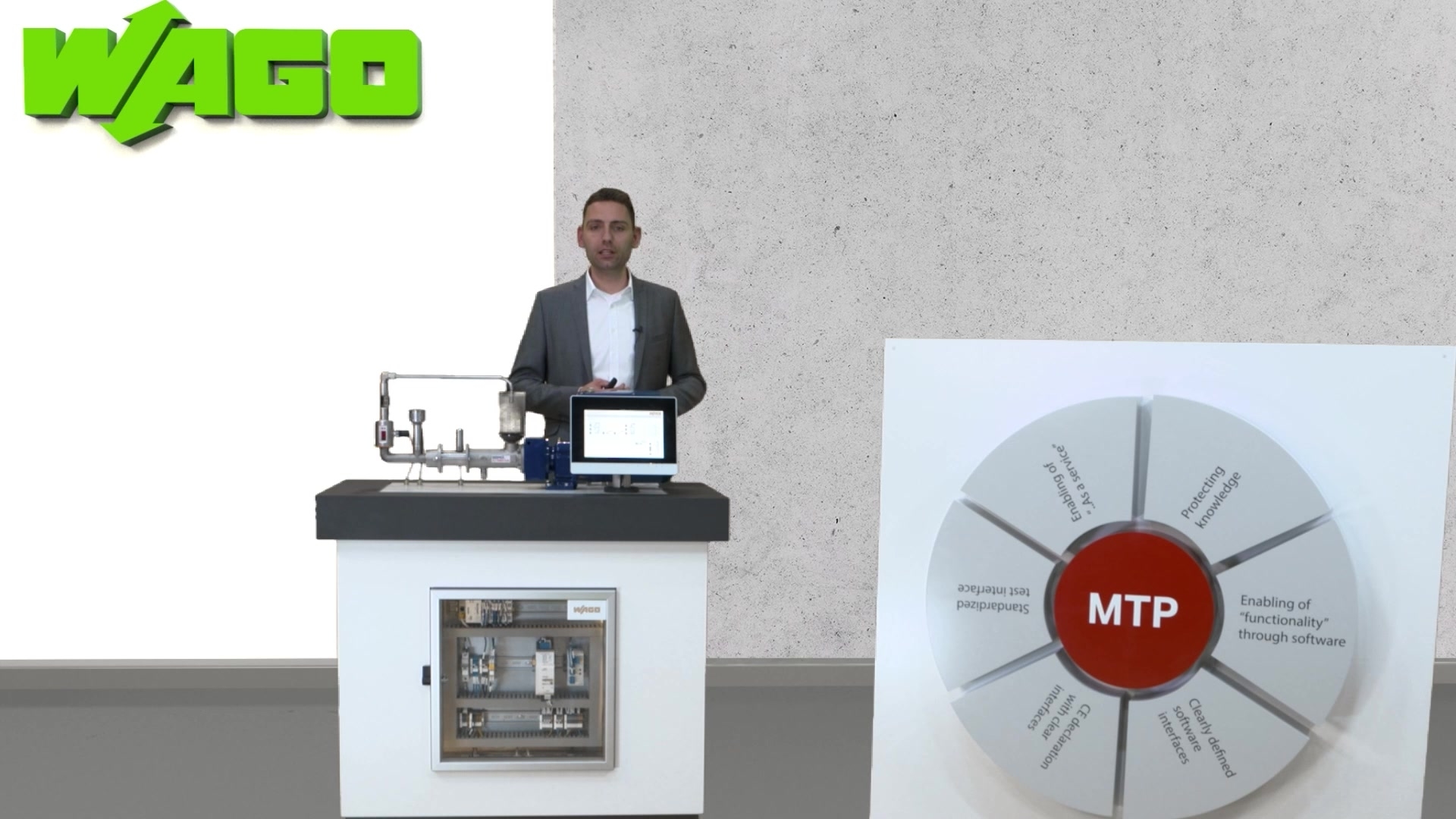
Modular Automation for Versatile Systems
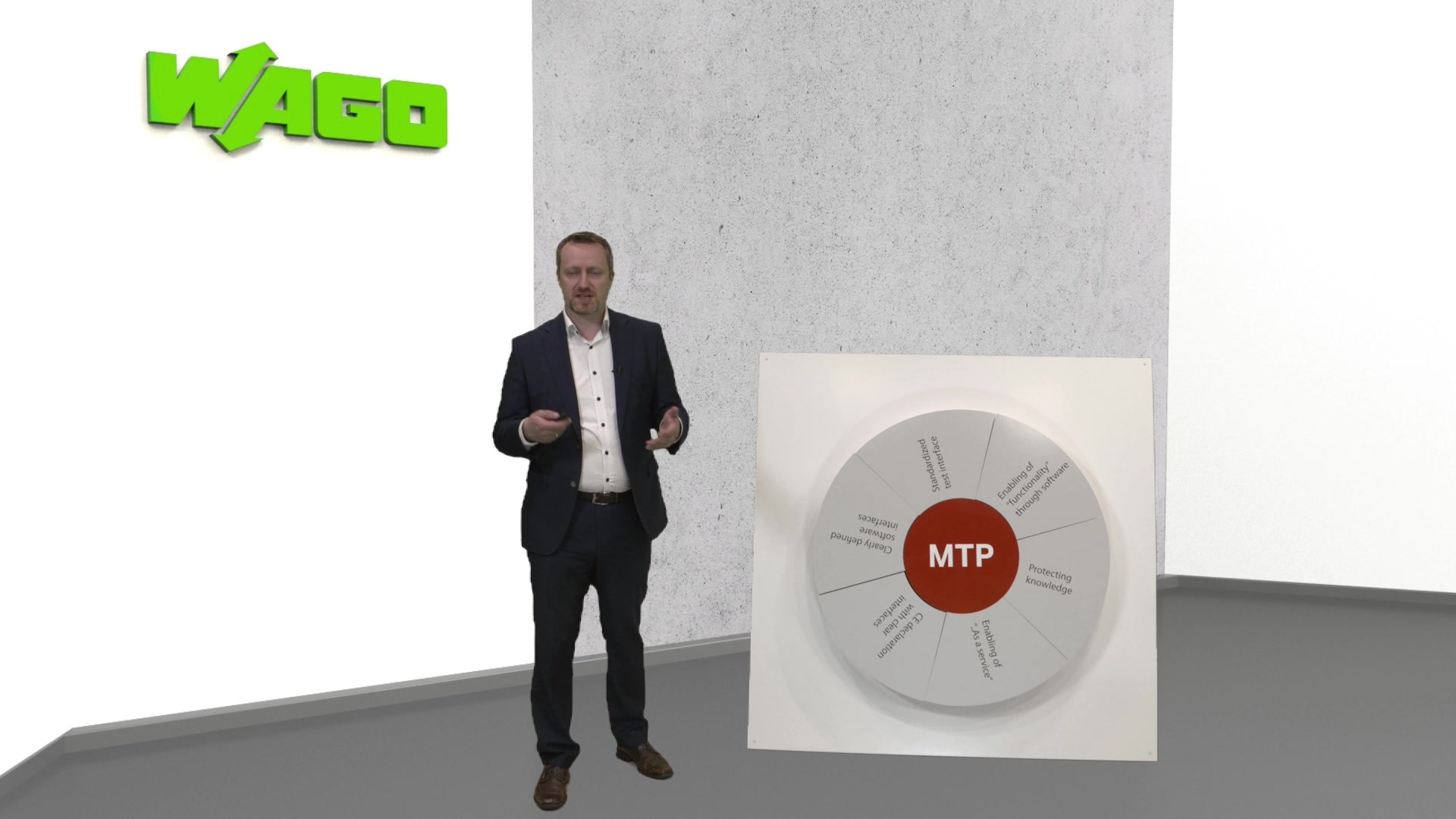
The Challenge of Adaptable Production
Sören Mirbach, Product Manager at WAGO Kontakttechnik
Learn how to react faster to market demands by making your systems more adaptable.

One-click module engineering: Take advantage of the benefits MTP offers.
Process Industry
In the chemical and pharmaceutical industries, production technology with a modular design clears the way for rapid production plant changeovers, adapting capacity to current sales trends and bringing new developments to the market more quickly.
Marine and Offshore
Bigger and bigger ships are being built in less and less time. Modern container leviathans and cruise ships rely on increasingly complex technologies. MTP offers a way to link machine and system components together quickly and seamlessly and to incorporate them into the ship automation system without time-consuming discussions about interfaces.
Mechanical Engineering
The mechanical engineering industry is facing new demands and challenges: simultaneous cost reduction and performance improvement, Industry 4.0 and more flexible production. In these times of transformation, WAGO is your expert guide, supporting you with innovative solutions and reliable products – in all sectors.
Touch Panels and Displays
WAGO’s Touch Panels (HMI panels) not only improve the operability of machines and systems, but also offer an outstanding design and advanced technology.

PFC200 Controller
Make the engineering, control and visualization of your projects even easier and more convenient with the PFC200 Controller thanks to e!COCKPIT (CODESYS V3) and Linux®.
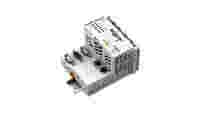
Reliable under Extremes: PFC200 XTR Controller
The PFC200 XTR Controller for extreme environments and Ex areas: engineering, control and visualization where other controllers fail!
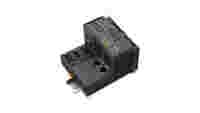
Programming and Configuration with WAGO’s
e!COCKPIT Engineering Software
WAGO’s e!COCKPIT automation software expedites machine and system commissioning, while reducing development times for automation projects!

MTP Library; Single License; Online Activation (2759-208/211-1000)
Modular systems are becoming more and more common in manufacturing and process engineering. Fluctuating quantities and highly specialized products require efficient production in small quantities. Modular systems are also used in other industries like shipbuilding where simple integration into higher-level systems is a crucial factor for success.
e!COCKPIT MTP; Single License; Online Activation (2759-120/1121-1000)
The e!COCKPITMTP add-on extends the functionality of e!COCKPIT and makes it possible to create a Module Type Package (MTP) description of an automation module per the VDI/VDE/NAMUR 2658 standard adopted jointly by NAMUR, ZVEI and VDMA with just one click of the mouse button.

Recommended Reading
Ideas for the Challenges of Tomorrow
Energy Management
Saving energy is good for the environment and for business. Performing the proper analysis and taking the right steps can lead to sustainable profit. WAGO is your partner for effective energy management.

Lighting Management
Putting lighting into service faster and reducing overhead with simple operation: WAGO makes it possible!
